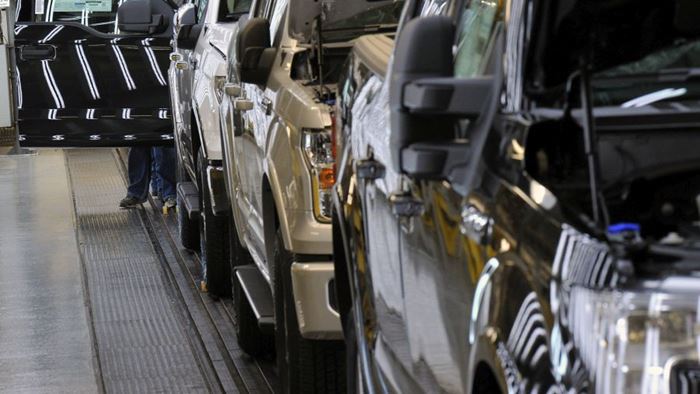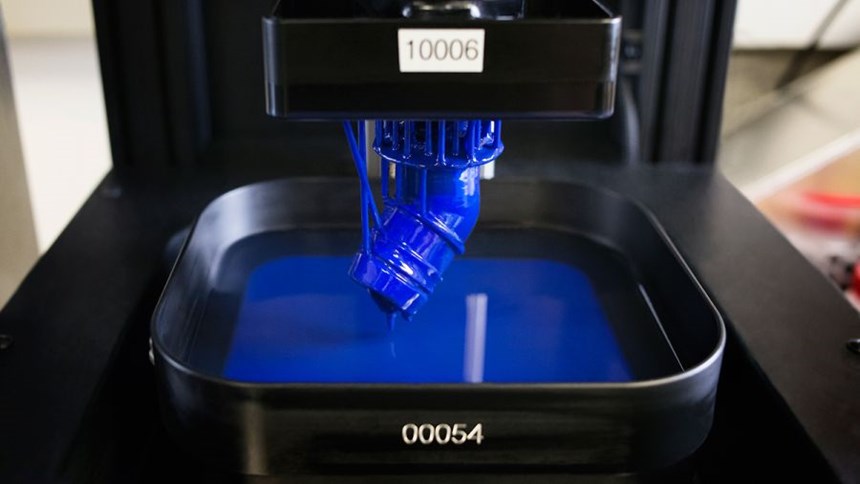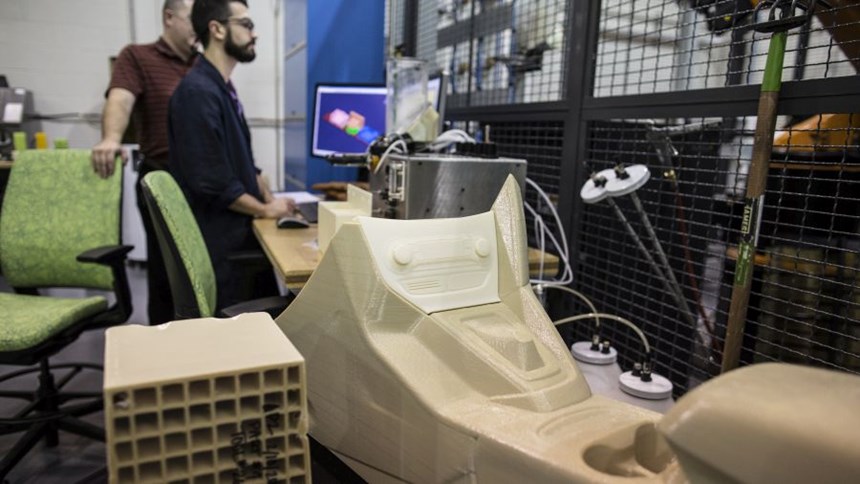Ford Crossing Bridges to Additive Manufacturing in Automotive Production
The automaker is actively working to bridge the gaps keeping additive manufacturing from advancing into automotive parts production. Partnerships that help that advance are vital.
With nearly 30 years of experience using 3D printing for prototyping work, the Ford Motor Company is now throwing its weight behind bringing additive manufacturing into functional automotive applications. Over the past several years, it has supported a dedicated additive manufacturing research program aimed at exploring and developing potential AM applications.
Headed by Ellen Lee, technical leader, that program has a short-term goal of applying AM technologies today for tooling, fixtures, and manufacturing aids. But long-term, says Lee, its goal is to “advance the technology to bridge gaps for durable automotive components.” I recently had the chance to talk with Lee about this. The various gaps she and others in Ford are working to address include:
- Durability. The ability to build robust components that will meet or exceed all of Ford’s requirements will be necessary to expand the scope of AM’s application in the auto industry.
- Materials. Lee notes that the majority of materials available for AM have been developed for prototyping or for medical and aerospace applications. Automotive-grade materials are essential to help make AM viable for this industry.
- Scale. Size and speed of current AM technologies do not have the capability for volume automotive applications.
- Supply chain. No robust automotive supply base exists for AM parts.
Internally, Ford is working to solve these challenges through its own R&D capabilities. Team members are discovering what properties are necessary in functional AM components for vehicles, developing novel applications for new materials, and experimenting with post-processing techniques. As part of internal design challenges, Ford engineers propose part designs for niche applications using 3D printing, thereby pushing out additive thinking to the broader organization. All this moves additive manufacturing closer to the production floor.
But the company realizes it will not bridge the gaps alone. That’s why Ford has partnered so closely with AM suppliers. “We want to get in early enough to give feedback on things like capabilities, HMIs, and materials,” says Lee. To get the equipment and materials necessary for automotive AM, the company is compelled to provide the automotive-industry perspective in all these areas.
These partnerships provide early feedback to machine builders while also allowing Ford to grow its own knowledge base. For example, in 2014 the company partnered with Carbon to test a pre-release version of the Continuous Liquid Interface Production (CLIP) technology.
Another recent instance of such a partnership is Ford’s collaboration with Stratasys in the alpha stages of developing the Infinite Build 3D Demonstrator. This 3D printing system uses thermoplastic extrusion to print on a vertical build platform. By orienting the Z axis parallel to the floor, the machine offers “infinite” Z printing height. Short-term applications for this technology are the creation of tooling and prototype parts.
Lee recognizes that automotive manufacturing is just one perspective and one market that additive manufacturing serves; other industry segments will have different needs. But voicing those varied needs and working to solve the problems they present is the best way to ensure that AM technology advances in ways that are truly useful.
Related Content
Machine Tool Drawbar Made With Additive Manufacturing Saves DMG MORI 90% Lead Time and 67% CO2 Emission
A new production process for the multimetal drawbar replaces an outsourced plating step with directed energy deposition, performing this DED along with roughing, finishing and grinding on a single machine.
Read MoreAdditive Manufacturing Is Subtractive, Too: How CNC Machining Integrates With AM (Includes Video)
For Keselowski Advanced Manufacturing, succeeding with laser powder bed fusion as a production process means developing a machine shop that is responsive to, and moves at the pacing of, metal 3D printing.
Read MoreAt General Atomics, Do Unmanned Aerial Systems Reveal the Future of Aircraft Manufacturing?
The maker of the Predator and SkyGuardian remote aircraft can implement additive manufacturing more rapidly and widely than the makers of other types of planes. The role of 3D printing in current and future UAS components hints at how far AM can go to save cost and time in aircraft production and design.
Read MoreVideo: 5" Diameter Navy Artillery Rounds Made Through Robot Directed Energy Deposition (DED) Instead of Forging
Big Metal Additive conceives additive manufacturing production factory making hundreds of Navy projectile housings per day.
Read MoreRead Next
Postprocessing Steps and Costs for Metal 3D Printing
When your metal part is done 3D printing, you just pull it out of the machine and start using it, right? Not exactly.
Read MoreBike Manufacturer Uses Additive Manufacturing to Create Lighter, More Complex, Customized Parts
Titanium bike frame manufacturer Hanglun Technology mixes precision casting with 3D printing to create bikes that offer increased speed and reduced turbulence during long-distance rides, offering a smoother, faster and more efficient cycling experience.
Read MoreProfilometry-Based Indentation Plastometry (PIP) as an Alternative to Standard Tensile Testing
UK-based Plastometrex offers a benchtop testing device utilizing PIP to quickly and easily analyze the yield strength, tensile strength and uniform elongation of samples and even printed parts. The solution is particularly useful for additive manufacturing.
Read More
.jpg;width=70;height=70;mode=crop)























